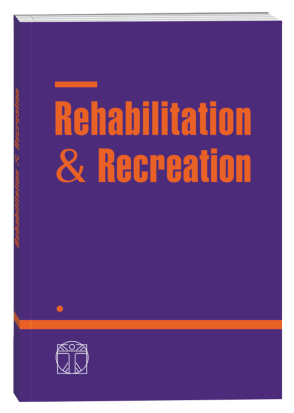EVALUATION OF THE ARTISTIC GYMNASTICS DEVELOPMENT PROGRAM
Keywords:
Evaluation, Coaching, Sports, Artistic GymnasticsAbstract
This study aims to: 1) Know how the role of the trainer in coaching and developing the artistic gymnastics of Cilacap Regency. 2) Knowing how the training program for coaching and developing achievements in artistic gymnastics in Cilacap Regency. 3) Knowing how to manage management and development of artistic gymnastics achievements in Cilacap Regency. 4) Knowing how to evaluate the implementation of coaching and development of artistic gymnastics achievements in Cilacap Regency. 5) Knowing how the facilities and infrastructure for the development and development of artistic gymnastics achievements in Cilacap Regency. 6) Knowing what obstacles are in the achievement of aristic gymnastics in Cilacap Regency. This research is an evaluative study with a context, input, process, product (CIPP) model. The sampling technique used in this study was purposive sampling technique. The data collection techniques in this evaluative research are observation and questionnaires (questionnaires). The method used in this research is a questionnaire method using a Likert scale. The data analysis technique used in this research is descriptive analysis, namely by describing and interpreting the data from each of the components being evaluated. The results showed that the coach was able to carry out coaching well, he was able to discipline athletes, and the administrators were also able to make good management in the organization. There needs to be regeneration of athletes and understanding of sports actors in producing potential athletes. Sports coaching is organized in a planned, integrated and sustainable manner. Quality and quantity infrastructure and facilities support. The obstacles identified were athlete factors, coach factors, equipment and facilities factors, quality factors and competition quantity factors. Organizational factors, namely funding, organizational management, and coordination. The conclusion obtained from this research is that the program of coaching and development of artistic gymnastics achievements in the Cilacap regency gymnastics club is well organized.
References
Aprilia, K. N., Kristiyanto, A., & Doewes,M. (2018). The Exercise Evaluation of Badminton Athletes Physical Conditions and Sport Exercise Students in Central Java. Jurnal Pendidikan, 3(1), 441–446.
Aubry, A., Hausswirth, C., Louis, J.,Coutts, A. J., & Le Meur, Y. (2014). Functional overreaching: The key to peak performance during the taper? Medicine and Science in Sports and Exercise, 46(9), 1769–1777. https://doi.org/10.1249/MSS.0000000000000301
Avdeeva, M. S., & Tulyakova, O. V.(2018). Indicated factors of physical development, physical readiness, functional condition and efficiency of female students in the process of adaptation to training. Physical Education of Students, 22(1), 4–10. https://doi.org/10.15561/20755279.2018.0101
Eubank, M., Nesti, M., & Wood, M. L.(2017). A culturally informed approach to mental toughness development in high performance sport. International Journal of Sport Psychology, 48(3), 206–222. https://doi.org/10.7352/IJSP.2017.48.206
Hollings, S., Hopkins, W., & Hume, P.(2014). Age at peak performance of successful track & field athletes. International Journal of Sports Science and Coaching, 9(4), 651–661. https://doi.org/10.1260/1747-9541.9.4.651
Jackson, S. A., & Roberts, G. C. (2016).Positive Performance States of Athletes: Toward a Conceptual Understanding of Peak Performance. The Sport Psychologist, 6(2), 156–171. https://doi.org/10.1123/tsp.6.2.156
Longo, A. F., Siffredi, C. R., Cardey, M.L., Aquilino, G. D., & Lentini, N. A. (2016). Age of peak performance in Olympic sports: A comparative research among disciplines. Journal of Human Sport and Exercise, 11(1), 31–41.
https://doi.org/10.14198/jhse.2016.111.03
Marcora, S. [Ed], & Sarkar, M. [Ed].(2018). Sport and the brain: The science of preparing, enduring and winning, part C. Sport and the Brain: The Science of Preparing, Enduring and Winning, Part C., 9(1), 33–48.
Marrier, B., Robineau, J., Piscione, J.,Lacome, M., Peeters, A., Hausswirth, C., Morin, J. B., & Le Meur, Y. (2017). Supercompensation kinetics of physical qualities during a taper in team-sport athletes. International Journal of Sports Physiology and Performance, 12(9), 1163–1169. https://doi.org/10.1123/ijspp.2016-0607
Mkaouer, B., Hammoudi-Nassib, S.,Amara, S., & Chaabène, H. (2018). Evaluating the physical and basic gymnastics skills assessment for talent identification in men’s artistic gymnastics proposed by the International Gymnastics Federation. Biology of Sport, 35(4), 383–392. https://doi.org/10.5114/biolsport.2018.78059
Moeskops, S., Oliver, J. L., Read, P. J.,Cronin, J. B., Myer, G. D., & Lloyd, R. S. (2019). The physiological demands of youth artistic gymnastics: Applications to strength and conditioning. Strength and Conditioning Journal, 41(1), 1–13. https://doi.org/10.1519/SSC.0000000000000404
Norouzi,E., Hosseini, F. S., Vaezmosavi, M., Gerber, M., Pühse, U., & Brand, S. (2020). Zumba dancing and aerobic exercise can improve working memory, motor function, and depressive symptoms in female patients with Fibromyalgia. European Journal of Sport Science, 20(7), 981–991. https://doi.org/10.1080/17461391.2019.1683610
Pasichnyk, V., Khimenes, K., Pityn,M., Bas, O., Hlukhov, I., Hnatchuk, Y., & Drobot, K. (2021). Physical condition of preschool children with disabilities in psychological and physical development. Journal of Physical Education and Sport, 21(1), 352–359. https://doi.org/10.7752/jpes.2021.01033
Richardson, D. L., Duncan, M. J.,Jimenez, A., Juris, P. M., & Clarke, N. D. (2020). Affective responses to supervised 10-week programs of resistance exercise in older adults. Journal of Sport and Health Science, 9(6), 604–613. https://doi.org/10.1016/j.jshs.2019.01.006
Root, H., Marshall, A. N., Thatcher, A.,Snyder Valier, A. R., Valovich McLeod, T. C., & Curtis Bay, R. (2019). Sport specialization and fitness and functional task performance among youth competitive gymnasts. Journal of Athletic Training, 54(10), 1095–1104. https://doi.org/10.4085/1062-6050-397-18
Sealey, R. M., & Tope, S. B. (2011).Effects of exercise interventions on physical condition and health of Vietnam veterans. International Journal of Therapy and Rehabilitation, 18(8), 438–449. https://doi.org/10.12968/ijtr.2011.18.8.438
Stufflebeam, D. L., & Coryn, C. L. S.(2014). Daniel Stufflebeam’s CIPP model for evaluation: An improvement and accountability oriented approach. In Evaluation theory, models, and applications: Research methods for the social sciences (pp. 309–340).
Thomas, R. E., & Thomas, B. C.(2019). A systematic review of injuries in gymnastics. Physician and Sportsmedicine, 47(1), 96–121. https://doi.org/10.1080/00913847.2018.1527646
Downloads
Published
How to Cite
Issue
Section
License

This work is licensed under a Creative Commons Attribution-NonCommercial-NoDerivatives 4.0 International License.











